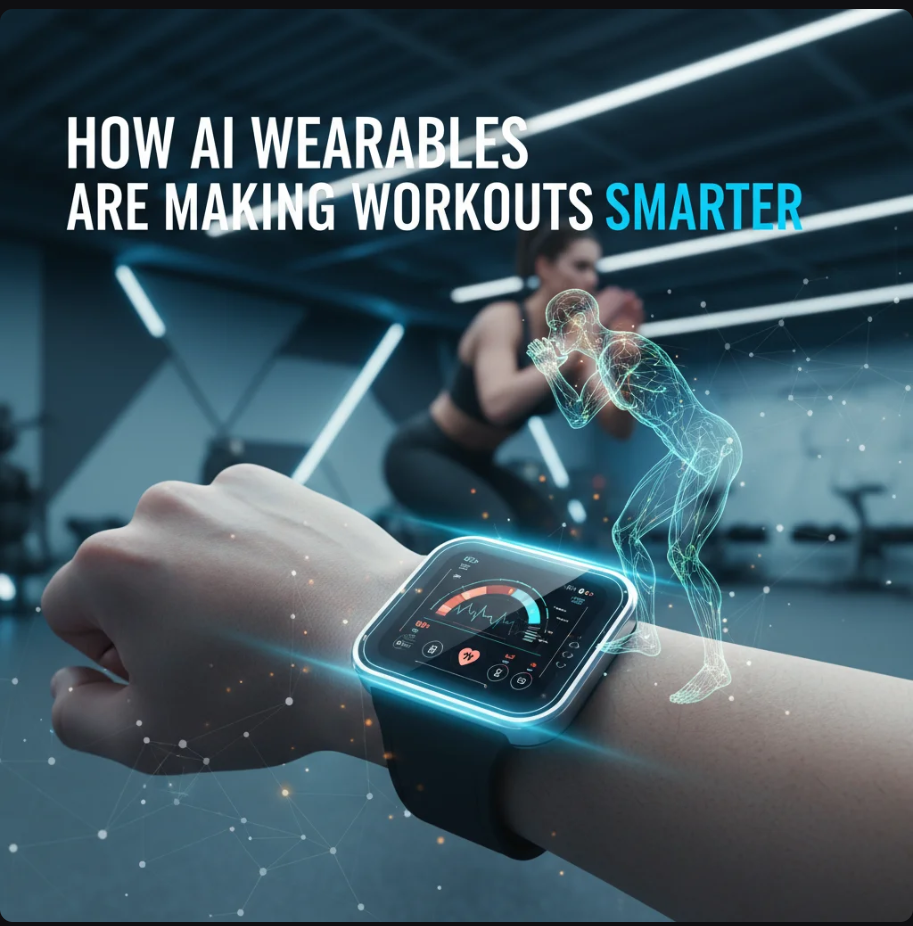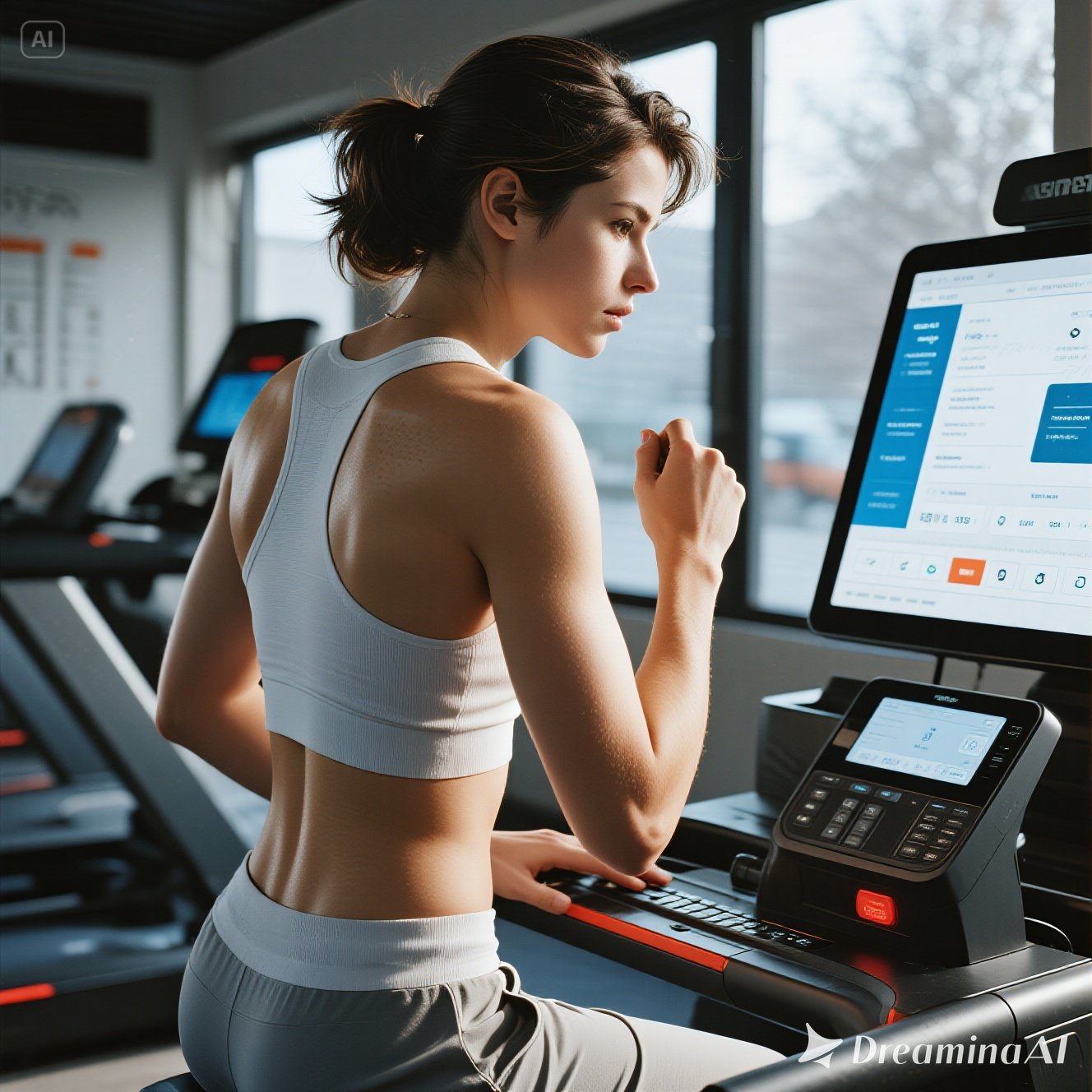AI wearables are transforming fitness with real-time biometric analysis, personalized training, and smarter workout optimization. Learn how these devices elevate performance.
Wearable devices have evolved rapidly in the last decade — from simple step counters to intelligent fitness companions powered by Artificial Intelligence.
Today’s AI wearables are capable of analyzing movement, monitoring biometrics, and delivering personalized training insights in real time. They don’t just track workouts; they help users train smarter, safer, and more efficiently.
This transformation marks a new era in the fitness industry, where technology and biology merge to create hyper-personalized coaching experiences for every type of user.
1. What Makes AI Wearables Different from Traditional Trackers?
Traditional fitness trackers record basic metrics such as steps, calories, or heart rate.
AI-powered wearables take things further by interpreting data, not just collecting it.
AI wearables can:
- analyze movement quality instead of just counting repetitions
- detect fatigue based on biometric signals
- adjust workout intensity automatically
- predict performance plateaus
- recommend recovery strategies
This shift from passive tracking to active coaching is what makes AI wearables a revolution in fitness technology.
2. Real-Time Biometric Analysis: The Brain Behind Smarter Workouts
AI wearables monitor a wide range of biometrics, including:
- heart rate variability
- oxygen saturation
- muscle activation
- body temperature
- sleep cycles
- stress indicators
Combining these data points allows AI to assess the body’s readiness and tailor workout recommendations accordingly.
A simple example:
If the wearable detects elevated stress and low recovery levels, it may suggest low-intensity training instead of heavy lifting — reducing the risk of injury.
3. Motion Tracking and Form Correction
Advanced wearables equipped with motion sensors or camera-based AI can evaluate movement patterns.
They can:
- detect incorrect posture
- analyze squat depth
- monitor arm trajectory during lifts
- assess running gait
- identify muscle imbalances
Instant feedback helps users correct form immediately, rather than waiting for a personal trainer or experiencing discomfort later.
This makes AI wearables especially valuable for home workouts, where users often train without professional supervision.
4. Personalized Training Programs Powered by Machine Learning
AI wearables build training plans based on:
- user habits
- biometric trends
- performance consistency
- recovery speed
- fitness goals
Over time, the system learns from the user’s behavior and adapts:
- increasing tension on strong days
- recommending rest on fatigue-heavy days
- adjusting target reps and sets
- suggesting alternative exercises
This machine learning–driven personalization creates a coaching environment unique to each user.
5. Recovery Optimization: The Hidden Strength of AI Wearables
Modern fitness is not only about training harder; it’s about recovering smarter.
AI wearables offer insights such as:
- ideal sleep duration
- recovery scores
- hydration reminders
- breathing exercises
- cold vs. heat therapy recommendations
Recovery data helps prevent overtraining — a common cause of injury and declining performance.
6. Integration With Smart Gym Equipment
Wearables can synchronize with:
- smart treadmills
- connected stationary bikes
- resistance machines
- digital weight systems
- VR fitness platforms
This integration allows users to maintain a consistent training profile across multiple environments — home, gym, or outdoor workouts.
AI systems adjust resistance, speed, or incline automatically based on the user’s biometric response in real time.
7. Social and Competitive Features Driven by AI Insights
AI wearables also enhance the social aspect of fitness by offering:
- AI-generated challenge recommendations
- performance-based matchmaking
- adaptive difficulty in group workouts
- precise progress comparison across users
These features make training more engaging while preserving personalization.
8. The Role of AI Wearables in Preventing Injuries
Through continuous monitoring, AI wearables can detect early signs of:
- muscular fatigue
- dehydration
- poor movement patterns
- cardiovascular irregularities
The device can alert users before a potential injury occurs, making training safer — especially for athletes or individuals with health risks.
9. The Future of AI Wearables in Fitness
The next generation of AI wearables will incorporate:
- predictive health analytics
- advanced metabolic tracking
- noninvasive glucose monitoring
- smart fabrics with embedded sensors
- neural-interface fitness control
- virtual personal trainers powered by generative AI
In the future, wearables may become proactive health partners capable of predicting injuries, optimizing nutrition, and guiding real-time decision-making across workouts.
Conclusion
AI wearables are reshaping the world of fitness by offering personalized coaching, smarter data interpretation, and real-time feedback.
Instead of guessing what the body needs, users can now train based on precise, evidence-driven insights.
With continuous advancements in biometrics, machine learning, and smart integration, AI wearables will play a central role in building healthier, more efficient workout routines — whether for casual users or elite athletes.
Recommend :














